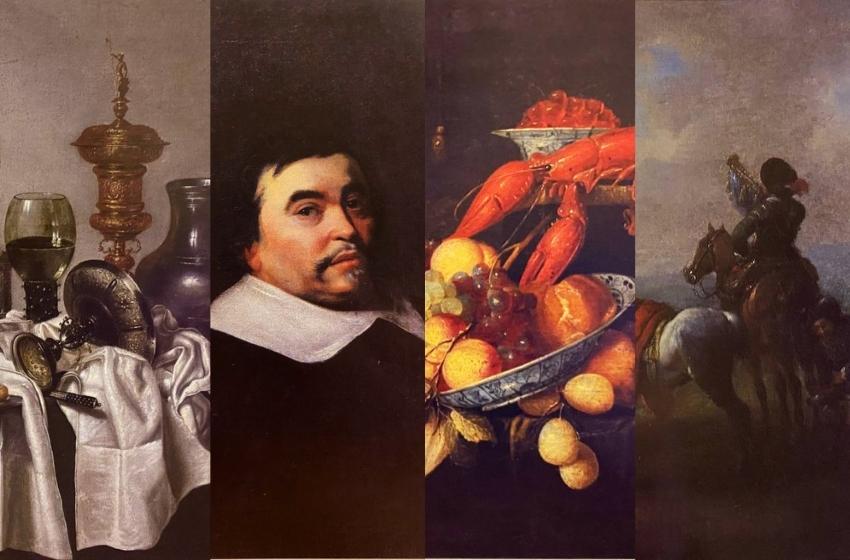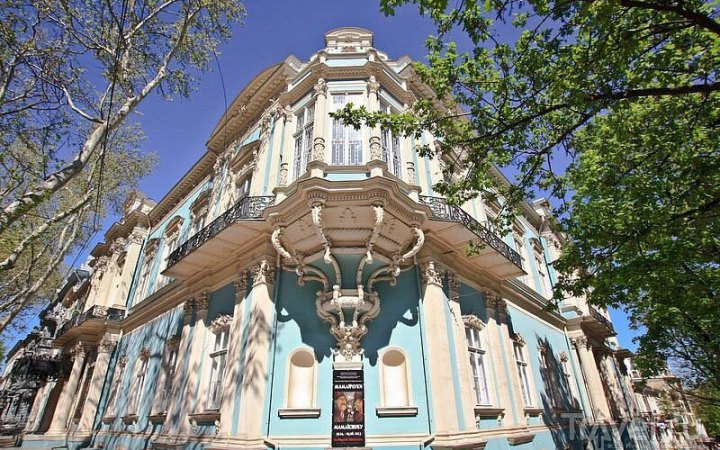The funds of the Odessa Museum of Eastern and Western Art contain the valuable works of Dutch masters: paintings, engravings, original drawings, and Delft faience. And of this number, only 4 paintings are on permanent display. In this article, we want to tell you about 4 paintings in the museum's depositories.
Philips Wouwerman
1619-1668
Falcon Hunting"

The small painting is an exemplary example of the art of the famous artist Phillips Wowerman, one of the most talented landscape painters of the Golden Age of Dutch art of the 17th century. He was born in Harlem, studied with his father Paulus Justin Wowerman, but his artistic style was influenced by the work of landscape painter Peter van Lahr.
For two years (1638-1640) he lived in Hamburg, where he married a Catholic girl, with whom he returned to his homeland. In 1645, when he was 26 years old, Phillips Wowerman is mentioned as the head of the Harlem Guild of St. Luke. Talented, universal in nature, he painted a variety of landscapes and animals, battle scenes, and genre scenes, but above all the artist was a master of picturesque genre story and conducted it easily and effortlessly.
His small landscapes fill the figures of hunters, soldiers, robbers. The museum painting was part of a hunting series, in which the artist appears as a wonderful animalist: next to people, there are dogs, falcons, horses. The favorite character in such scenes is a light gray graceful horse with a red cloth thrown over the saddle. This is the brightest and at the same time, the bright spot makes you "play" the whole picture. Sophisticated play of chiaroscuro, the sophistication of the palette, miniaturization of the image - the main characteristics of the style of Phillips Wowerman. His paintings were in demand during the master's lifetime but became even more popular in the 18th century.
"Falconry" or "Falcon Hunting" in the middle of the 19th century was owned by collector Marcell Sobansky, one of the founders of the Odessa Society of Fine Arts, and in 1865 participated in the first exhibition of the society, then stored in the Odessa Art School, in 1923 through the Museum Fund the painting came to the museum. During the Second World War, the painting was evacuated to the Urals, and after returning in 1944, it adorned the exhibition hall of Dutch art of the 17th century.
Willem Claesz Heda
1594-1680/82
Still life with oysters

The painting was transferred to the museum in 1951 from the Directorate of Exhibitions and Panoramas of the Committee on Art under the Council of Ministers of the USSR (Moscow). It is a replica of "Still Life with a Gilded Cup" (1635) from the collection of the Rijksmuseum.
Geda was an excellent still-life master of the Golden Age of Dutch painting, but of the artist's entire artistic output, about 70 paintings have survived to this day. He was born in Haarlem and studied painting with his father, Gerrit Willems Heda, at the age of forty he was already a painter with a high reputation, repeatedly elected dean of the Haarlem Guild of St. Luke. His favorite subject was the so-called "breakfasts", in which he usually depicted a certain set of tableware and food - such as in a museum painting.
The still lifes of Willem Claesz Heda are characterized by subtle skill in conveying the texture of the depicted objects and restrained silver-gray color. The painting is inspired by the painter's loving and caring attitude to the world of things.
Amazing accuracy in the transfer of objects is combined with mysterious poetics, which gives the viewer sincere pleasure. Objects seem to preserve traces of a person's recent presence: a crumpled tablecloth, a discarded napkin, unfinished wine in a glass…
They also have a hidden allegorical meaning: gold and silver utensils - a symbol of wealth; lemon - external beauty, inside which hides the bitterness; open oyster shells - a soul that is ready to leave the earth's crust. Reading still life for the Dutch of that time was something like an intellectual game.
Bartholomeus van der Helst
1613-1670
Portrait of a man. 1661

On the reverse side of the canvas, there is an ancient inscription, which indicates that the painting was painted by Bartholomeus van der Helst in 1661. A famous painter and engraver, he painted on historical, biblical, and mythological subjects, but he was famous for his portraits. The artist was born in Haarlem in 1613. His father was an innkeeper.
At the age of 23, Bartholomeus married and moved to Amsterdam, where he remained for the rest of his life. Little is known about his years of study. It is traditionally believed that his teacher in Amsterdam was the artist Nicholas Elias Picenoy, but the style of painting by Gelst suggests that he studied and used the techniques of Rembrandt and Franz Hals.
The artist gained his first fame at the age of 24 when he painted a group portrait of members of the board of trustees of the Walloon Asylum. He has had many customers since then. His main clients were representatives of the Amsterdam bourgeoisie, who liked his virtuoso technique, material reliability, ability to satisfy the requirements of the authorities.
In Amsterdam in the second half of the 17th century, Bartholomeus van der Helst was even more popular than Rembrandt. The museum painting is a late replica of a portrait of the same man-made by the artist in 1647. It is stored in the collection of the Metropolitan Museum of Art in New York. The famous American writer Henry James, who saw this painting in New York in 1872, called it "the perfect prose of the portrait."
The name of the man depicted remains unknown, as does the fact why, 14 years later, the artist repeated the same portrait, only giving it a rectangular shape and writing the work not on wood but on dense.
Cornelis de Heem
1631-1695
Still life

Cornelis de Gem is a representative of a great dynasty of artists, the son of the famous still life master Jan Davidsz de Heem. He was baptized in Leiden on April 8, 1631, but at the age of 5, he moved with his family to Antwerp. His father was his teacher. In 1660, Cornelis de Heem became a member of the Antwerp Guild of Artists.
He painted fruit and flower still lifes, working in Holland and Flanders. Art critics enroll him in the Flemish-Dutch school because Cornelis de Heem adopted the artistic traditions of both regions. Decorative tendencies that spread in Dutch painting of the last third of the 17th century, as well as the new understanding of the subject and the role of light in the image generated by them, affected Cornelis' still lifes.
Peaches and grapes seem to radiate radiance themselves, turning a drop of dew and a matte essence on the surface of berries into a picturesque jewel. The artist combined the detail of the image with a brilliant selection of colors and refined taste in the construction of the composition. Thus the Flemish admiration for color was combined with a special, purely Dutch spirituality of matter, which determines the attractiveness of the work of Cornelis de Heem. The mise-en-scène and the selection of items in the museum's still life give him reason to see a characteristic example of the so-called "luxurious" still life ("pronk stilleven"), which appeared in Flemish art in the third quarter of the 17th century. At the edge of the table on the left is the signature: C. Deheem
Based on materials from the catalog of the exhibition "Golden Age" Dutch Art of the 17th century
To be continued...





















